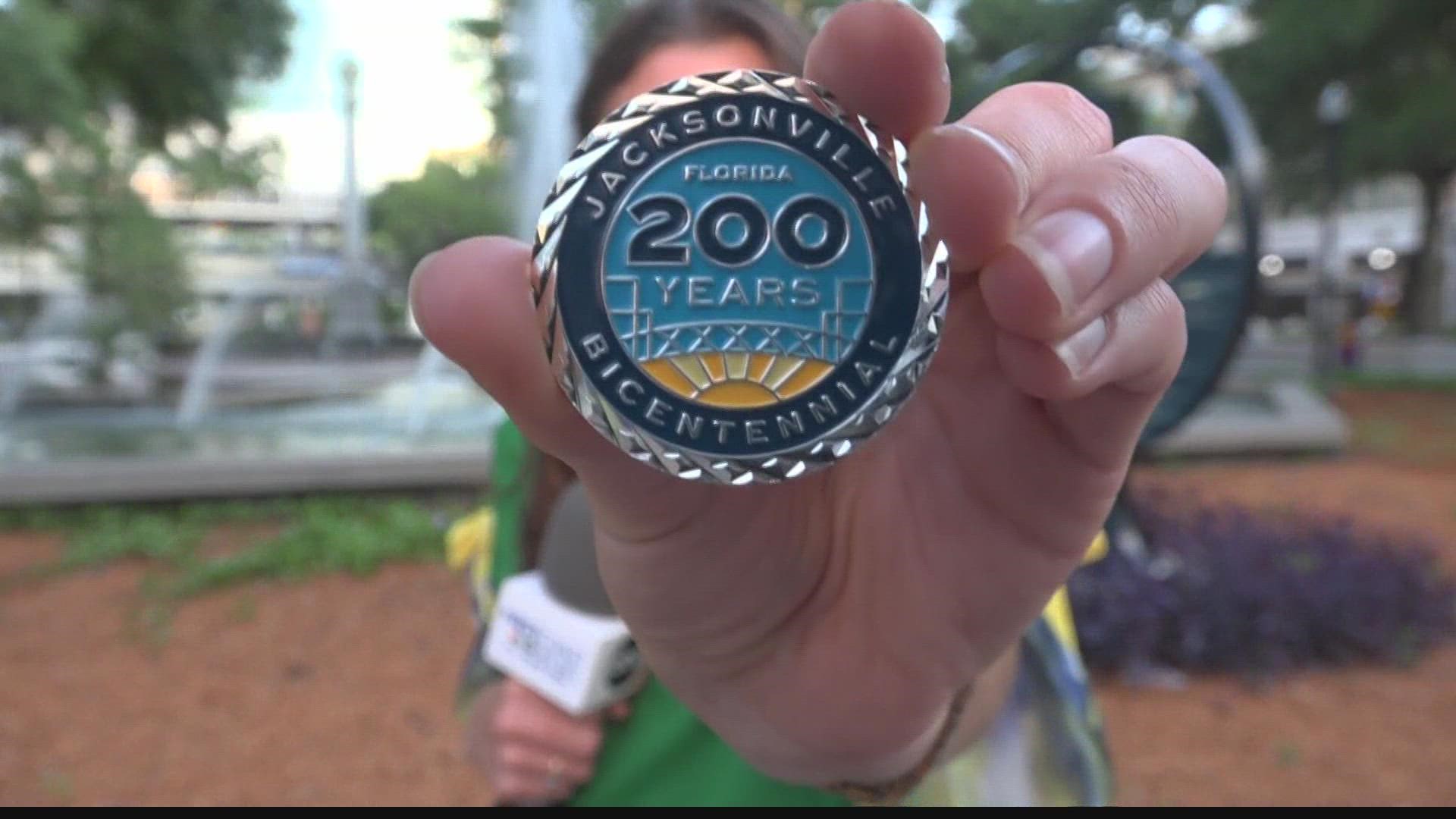JACKSONVILLE, Fla. — The video attached to this story is from a previous report.
This story was reported by the Florida Times-Union.
Much of Jacksonville’s written history is focused on the last couple of centuries, though that’s just a blip among the thousands of years during which people have tromped through the land.
You could go back more than 10,000 years, when giant ice caps locked up vast amounts of sea water and Florida was twice as wide, cooler and more arid than it is now. The first Floridians lived there then, hunting a now-extinct bison species, mammoths and mastodons.
Evidence, though, suggests, they just passed through what is now Jacksonville: Their settlements were instead set up around limestone watering holes and springs farther inland, or perhaps out on a coast now under water.
But as the Ice Age ended, and the oceans rose, people began settling along the waterways and in the uplands of the area, hunting and fishing.
No one knows what they called themselves, but the Spanish eventually dubbed them the Timucua, believed to be made up of about 35 chiefdoms – and perhaps 200,000 people — scattered across 19,000 square miles of North Florida and South Georgia.
They had connections to the larger world: Copper and rocks found in burial mounds in Jacksonville show that from 900 to about 1250 they were part of a vast trading network that stretched to a major city near St. Louis — and beyond, perhaps even as far as Lake Superior, says Keith Ashley, a University of North Florida archaeologist.
One Timucua group, the coastal-dwelling Mocama, were at the center of a crucial part of early American history, and one that would be the beginning of their end: Fort Caroline.
They were there when French explorers sailed into the St. Johns in 1562. And as his men set up a stone marker claiming the Mocama land for France, the natives greeted them "with gentleness and kindness," wrote Capt. Jean Ribault.
The French came back in 1564 to get a piece of the New World, living among — and quickly annoying — the native Mocama speakers. By 1565, that struggling outpost was overrun by the Spanish, who in response to the French settlement had set up a base in a place they would call St. Augustine.
Their goal? Driving the French out of territory that the Spain had claimed for itself.
That very European conflict was bloody and effective, and soon the French were gone. The Spanish, meanwhile, retreated back to tiny St. Augustine, an inauspicious place that gave them a toehold in the region.
The Spanish set up a mission system up and down the coast, trying to bring them under control while converting them to Catholicism.
In the decades after that, thousands upon thousands of Native Americans died, many from disease — smallpox, measles, influenza — for which they had no biological defense.
This story was reported by the Florida Times-Union.
By 1710, observers said that northeastern Florida, at least outside of the outpost of St. Augustine, was basically empty of human life.
In a 2020 Times-Union interview, Ashley, the UNF archaeologist, noted how momentous contact with Europeans would prove to be for those who'd lived here so long.
"May 1, 1562, the daily rhythm of Mocama life just halted then," he said. "The long-term impact of that was just going to be disastrous to the Mocama. They only had another 150 years left in Northeast Florida. They just didn't know it yet."
Decades later, plantations, run with slave labor, sprung up on either side of the St. Johns River as the Spanish gave out large land grants. In 1763, the British took East Florida over from the Spanish, holding it for 20 years before it went back under Spanish rule, centered still in St. Augustine.
There was a lot of room on the frontier, though, which attracted a variety of settlers in the last decades of the 18th century and the first decades of the 19th century. Some were fleeing debts. Some were hoping to escape a criminal past. Some wanted just a little land to themselves.
Others wanted refuge: Black communities sprung up, made up of slaves who had fled from slave states in America. Native Americans, including those who would become the Seminoles, moved in and out of the territory.
Times were tense, and more Americans, who called themselves the Patriots, edged into the Spanish territory. That led to the skirmishes of the Patriot War of 1812, an attempt to take control of Florida from Spain.
That fizzled out by 1814, but a few years later, in 1821, Spain ceded control of Florida to the United States.
That quickly led to more Americans moving into the area, and an effort to organize an official city on the St. Johns River.
Isaiah Hart and a handful of other settlers laid out eight blocks on the Northbank of the river, an area known before as the Cowford. That was a relatively narrow part of the river where you could get cows to the other side, with some effort.
They picked a new name, as tribute to Andrew Jackson, the military man and politician (and future president), who had briefly been the first governor of the new U.S. territory of Florida.
And in 1822 they applied to the U.S. government to have this new place, Jacksonville, become an official customs port of entry. That was turned down.
But the name stuck, and 10 years later the Florida Legislature approved the town's charter.
This story was reported by the Florida Times-Union.

